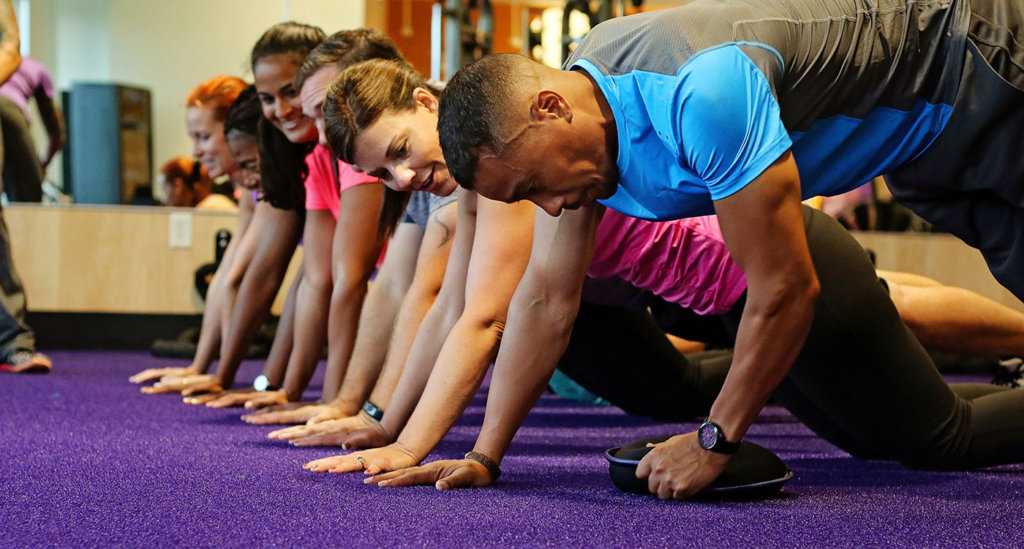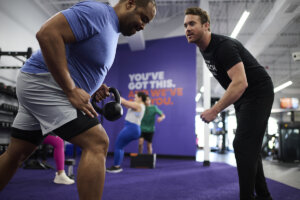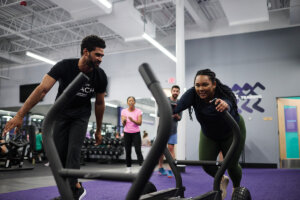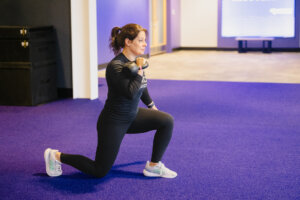When you think of a core exercise, your mind probably jumps to some variation of crunches or sit ups. While those are great exercises when done correctly, they aren’t exactly functional.
Not functional? Does that mean they don’t work? Not necessarily. Crunches and sit-ups can strengthen your core, but they don’t reflect how your body moves in everyday life. Can you think of the last time you had to lie on the ground and crunch your head up toward your knees, outside of the gym? No? Us either… That’s why we love functional training!
What is Functional Core Training?
Functional core training is all about training the core, and the body, in ways that you move in everyday life. For example, carrying a heavy weight in one hand and walking forward is an excellent core workout that can be directly applied to everyday life. That same carry will be replicated when you bring groceries into the house or have to lift something heavy while you’re at home.
The goal of functional training is to strengthen and stabilize your body for the movements you use in everyday life. As much as some of us may like the bench press, it may not be the most functional exercise unless you’re consistently pushing things away from you while lying on your back. A better example would be a squat, which you use many times every single day. That same squat will help you sit and stand in a chair, go to the bathroom, or sit down to get in your car.
When you think about it, functional training is what helps you improve the quality of your life. Unlike a squat, there isn’t one specific functional motion that recruits the core — that’s because just about every movement uses our core in some way! By functionally working your core, you’re training it to work with the rest of your muscles more efficiently, and strengthening it for every full-body movement you perform in your day-to-day life. After all, that’s why it’s called our core — it’s the center of our body, which makes it central to so many of our movements.
The functional core exercises below are some great examples of exercises that can help you take on everyday tasks with ease. Add these movements into your exercise routine to take your core to the next level!
Functional Core Workout
Pallof Press (Bands)
- For this move, you’ll need a resistance band that’s anchored to a solid object at about chest height.
- Stand upright holding a band handle in both hands at your chest with your elbows bent and the other end of the tubing connected to a solid object off to one side.
- Press the handle out in front to a straight arm position while maintaining a stable upper body position.
- Return the handle back to the start position and repeat.
- Complete all reps on one side before switching to the other side.
Farmer’s Walk
- Take two kettlebells or dumbbells and hold one in each hand.
- Pinch your shoulders down and back, giving yourself a broad chest.
- Continue to brace through your midsection and begin walking forward.
- Maintain level shoulders, as you fight the resistance your weight is putting on your core. The farmer’s walk is a great way to utilize heavier loads to really stress your upper back, grip, and core.
Side Plank
- Lie on one side, propped up on one elbow, with your legs straight out on top of one another. Raise your body off the floor, resting on your forearm and foot.
- Try to keep your body in a straight line and your elbow directly under your shoulder.
- Hold, then lower yourself back to the floor and repeat on the other side.
Deadbug
- Lie on your back with your knees bent and feet raised with your arms straight up in the air over your chest.
- Lower one leg and the opposite arm straight down toward the floor, keeping the other leg and arm steady.
- Raise the leg and arm back to the upright position and repeat with the opposite leg and arm.
- Alternate sides with each rep.
Kettlebell Swings
- Squat holding a kettlebell in both hands between your legs with your arms straight.
- Thrust your hips forward, swinging the kettlebell out and up to just over shoulder height, keeping your arms straight.
- Allow the kettlebell to fall forward, guiding it back down along the same path and repeat.



